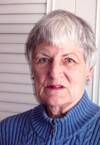Meet the Many Women Named Ruth Who Shaped Public Health in MN
Grouped by name, place and time, these extraordinary women made their mark.
Once upon a time, four women named Ruth transformed public health at the University of Minnesota.
That sounds flippant. But like so many stories about amazing women with expertise, it is both true and under-told.
According to Lydia Fess, a graduate student at the School of Public Health, she discovered these four women while researching the history of public health at the University of Minnesota.
“I call them the Holy Four of Ruths,” Fess claims.
The truth is that the School of Public Health, like any institution, has been the beneficiary of brilliant women all along, whatever their first names happen to be. But the coincidence of their names makes for a fun story.
Officially, the School of Public Health was founded in 1944. But its origins trace back to decades earlier, when some of the first public health lectures in the country were delivered at the University of Minnesota just a few years after the American Civil War. When the school was created, the man named to run it, Gaylord Anderson, was deployed in World War II. And so, in his stead, Dr. Ruth Boynton ran the fledgling institution until his return. So, in effect, the first public health dean was a woman. Named Ruth, of course.
These days, one measure of influence is the presence (and depth) of a Wikipedia entry in one’s name. Well, Dr. Ruth Boynton’s is rich with details. And poor Gaylord Anderson, who was indeed a great leader in public health for decades, doesn’t even have one.
Another fun fact? There were other important Ruths who didn’t quite qualify for the Holy Four, which Fess admits came down to the confluence of both name and the time period of activity at the school.

“There’s one who came a little later, Ruth Stryker-Gordon,” Fess explains. “Under Nixon, they decided that nursing home administrators needed to actually be trained and licensed. Weirdly enough,” Fess laughs. “And so they had to take this exam. And anyone who failed the exam in Minnesota came to Ruth Stryker-Gordon, and she made the whole system to help these people pass the test, that we could actually have licensed nursing home providers in Minnesota. So she pretty much single-handedly did that, which is amazing.”
So take a moment to silently thank all of the thousands of public health heroes working tirelessly around the globe for your benefit. And maybe an extra “thank you” to the female pioneers of public health for blazing a trail while making the world a healthier place.
Editor's Note: Since the publication of this story, we received the following note from Ruth Stryker-Gordon, who wanted to clarify her role in Minnesota's public-health history and to shed light on the contributions of her husband, Dr. George Kenneth Gordon (or Ken, as he was known), as well as their collaboration over the years:
An amendment to the Medicare legislation in the 60’s required nursing home administrators to become licensed. This, of course, meant that a body of knowledge had to be developed because there was absolutely none. The Kellogg Foundation immediately funded a Long Term Care Administration Center at six universities across the U.S. One of those was at the University of Minnesota because of its strong Hospital Administration Program in the School of Public Health.
George Kenneth Gordon was hired from Indiana University to become director of the new U of M Center because of his doctorate in curriculum development and experience in mental health. At the time, the only known literature in the field were two government pamphlets.
The governor appointed a Licensure Board for this emerging profession. Ruth Stryker- Gordon was appointed as a Board member because of her work with nursing home administrators at Sister Kenny Institute’s educational programs. Dr. Gordon then hired her to be his assistant because of this experience.
Together, their pioneering work started with courses for practicing administrators and ended with a curriculum that enables students to get a baccalaureate degree with a major or a minor in the field. Together, they wrote the first textbook in the field, which went into four editions.
Learn about the past, present and future challenges faced by Minnesota’s public health heroes in Our Invisible Guardians, premiering on April 26.
Like so many Minnesotans, Twin Cities PBS Producer Luke Heikkila found himself suddenly camped out at his dining-room-table-turned-desk after a work-from-home mandate. But then he realized something: His neighbors were spending a lot of time outside. So he decided to check in with them to see how they’re faring in this time of COVID-19.
Twin Cities PBS Producer Luke Heikkila is also following the experience of a Minnesota family experiencing the unknowns of at-home quarantine after they returned from a vacation in England and France. Don’t miss the first installment and second installment in a series about their experience.
Because the COVID-19 pandemic is an evolving issue in Minnesota, Twin Cities PBS is producing a weekly show, Coronavirus: An Almanac Special, where we share practical information from trusted medical sources so all Minnesotans know the steps to prepare for the coronavirus.
We also have a list of resources from trusted organizations such as the Minnesota Department of Health, the CDC and the WHO, along with articles from our friends at Next Avenue and PBS Kids. You’ll also find multilingual versions of Coronavirus: An Almanac Special in Somali, Hmong and Spanish.
